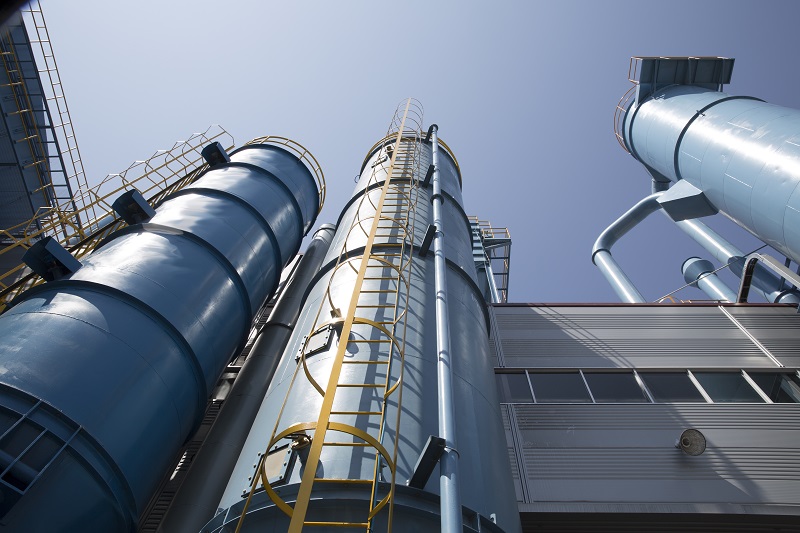A dust collector system is used to remove dust and pollutants from your commercial or residential areas, and they will improve the air quality of your premises. Typically, a dust collector system consists of:
- A blower
- Dust filter
- A cleaning system
- Dust disposal system
Different types of dust collector and their working principle:
There are different types of dust collectors available in the market and you can choose the best one as per your requirements. There are five different types of dust collector systems along with their working principles:
- Inertial Separators: This type of separators uses combination of forces such as centrifugal, gravitational force to separate dust from gases. This separated dust is moved to a hopper by gravitational force and store them in their bin bag. There are three types of inertial separators:
- Settling Chambers: This chamber has a simple design which contains a large box having a larger area of cross-sectional where the heavier dust particle settles down. This helps in reduction of dust filling in the air.
Pros:
- Simple design
- Low cost equipment
- Low maintenance required
- Collects dust particles without requiring water
Cons:
- Low efficiency
- Requires large space
- Baffle Chamber: These are pre-cleaners which uses a fixed plate to change the direction of the gas stream hence the dust particles of larger diameter then move into dead space air where they settle. They are perfect for your residential premises and you can easily use them for cleaning your domestic property.
- Centrifugal Chambers: A cyclonic effect is created to collect dust particles. Dust gas enters into the centrifugal chamber where it is spun rapidly and creating the circular flow and the dust is collected at the walls of the chambers. When the dust particles hit the chamber’s wall, it falls into the hopper below the collector.
The different types of centrifugal collectors are:
- Single cyclone separators: This separator collector creates a dual vortex – one spirally downwards thereby collecting coarser particles and other is an inner vortex at the bottom of the separator, carrying fine dust particles.
- Multiple cyclone separators: This works similarly like a single cycle separator and consists of small cyclones having a common inlet and outlet for air. These cyclones have longer residence time and they can effectively remove more dust than single cycle separator.
- Fabric Filters: A fabric filter is used to collect dust from gas stream. They are very useful in collecting very fine dust particles. Coating the fabric filter with calcium carbonate increases the efficiency of the fabric filter by forming a dust cake on the surface of the filter. Hence, it traps dust, moisture, sticky material, thereby adding life of the fabric filter as these materials can affect the efficiency of the filter media.
- Wet Scrubbers: These dust collectors use water to collect dust from airstream. This liquid used to remove dust particles by wet scrubbers. There are of different types:
- Gas Humidification: This process helps in trapping fine particles and agglomerates them to bulk, hence increasing the efficiency of dust collection.
- Gas liquid contact: It employs four different mechanism for dust collection:
- Inertial impact: Water droplets are used on gas stream filled with dust. This creates inertia and the dust particles move in a straight line and when they hit the water droplets, the dust particles become encapsulated.
- Interception: This mechanism lets the dust particles brush against the water droplets and stick to them hence allowing separation.
- Diffusion: This follows Brownian movement, where the water is scattered to allow the dust particles to deposit on these water droplets. This is mainly used in collecting micrometre dust particles.
- Condensation: A dust laden gas stream is passed on the scrubber where it is condensed to form water droplets. The condensation of gas to moisture increase the size of the dust particle hence allowing separation.
- Electrostatic Precipitators: This process applies electrostatic forces for separating dust from the gases. This requires using high voltage current electrodes. The contaminated gas is allowed to flow through these electrodes and the air borne particles are collected on the electrodes. This collected material is removed from the electrodes.
- Unit Collectors: This allows collection of the contamination at the source itself. They are self-contained dust collector boxes which are used as bins or silos.

Pros:
- Low cost
- Requires small space
- Various designs available
Depending on the size of the dust particle and the working principle of the above dust collector, the industry can wisely choose the best suitable dust collector to remove dust from their air.
previous post

